When the soil of the lawn gets compacted, it decreases its ability to absorb water to grow lush, healthy grass. One of the best ways to combat this issue is to aerate the lawn, but a common question is the damage it may cause to sprinkler heads. We wanted to know the answers to this question, so we researched this topic to find the best solutions for your lawn.
Aerators will not damage sprinkler heads as long as you properly mark and flag them before aeration. Doing these precautions will prevent you from damaging the heads of your sprinkler system. You also have to work around the sprinkler heads while aerating the lawn so that you won't affect the sprinkler lines.
Proper precautions are necessary before aerating the lawn because it can certainly cause issues to the sprinklers if done incorrectly. In this post, we'll also discuss what over-aerating can do to your lawn, and we'll also talk about the best times to do it. Keep reading this post, and we hope you'll find the answers to your questions!
Will Aerator Damage Sprinkler Heads?
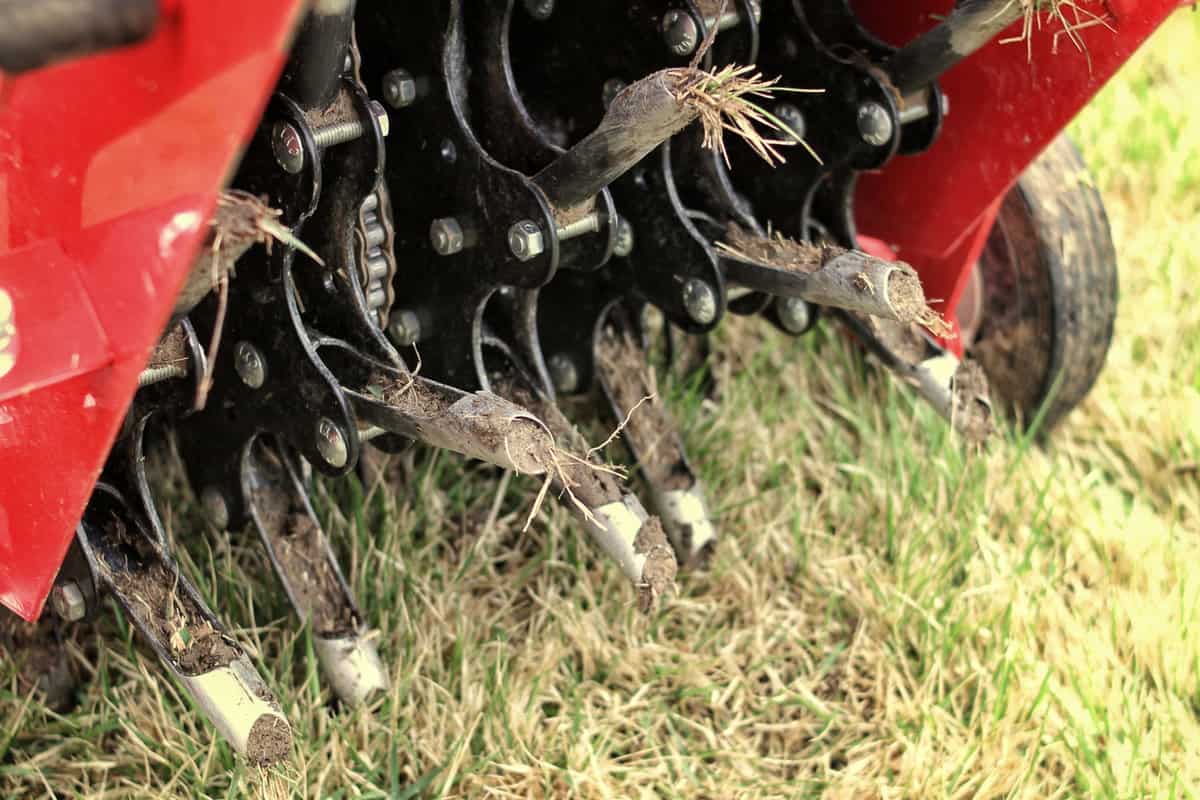
If you are one of the many homeowners with a big lawn in front of their homes, chances are you probably have an inground irrigation system. These inground systems are a godsend for anyone with a lawn because they minimize the time you spend watering and setting up sprinklers.
However, one of the issues lawn owners face is poorly grown grass on their lawns. Typically, you'd want to provide grass food to give the grass more nutrition. You'll also want to dethatch and aerate the lawn so that air circulates to the roots of the grass to make them healthy.
To aerate your lawn, you can go to your local garden supply and rent an aerator to get the job done. You can rent them for about $70 to $100 (or more), depending on how long you will use them. These aerators are gas-powered and self-propelling, making them easy to use even on a big lawn.
One of the challenges you may face with these big, gas-powered aerators is the damage they can cause to your sprinkler heads. Since the aerating machine is pretty big, it can catch on the sprinkler heads and ruin them if you don't avoid them during aeration. This is why marking the sprinkler heads is important if you will be using an aerator.
Of course, other methods can be less damaging to your sprinkler heads. This means you will manually aerate the lawn to avoid the sprinklers easily.
Get this manual lawn aerator on Amazon.
To do this, you can always use a manual aerator if you have the time and energy to do this task. There are even shoe versions of this manual aerator, so all you have to do is walk around the lawn until you've done the job. With this tool, you will least likely damage your sprinkler heads because you will know to avoid them easily.
Grab these marker flags on Amazon.
Of course, it is always better to mark the location of your sprinkler heads, whether you will be using an aerator machine or a manual tool. The best way to mark them is by using these flags to locate the sprinkler heads. Choose a bright color for you to see even from afar, so you can plot out your movements while aerating the lawn.
What Happens When You Over Aerate?
Aerating the lawn is important, but too much of a good thing can actually ruin your well-kept lawn. Sometimes, people feel like their first run in aerating the soil isn't enough, so they go through it again. This over-aerates the lawn and can cause new issues as the grass gets too much air.
Over-aerating the lawn can cause stress to the grass. It will also make the soil uneven, which makes it harder for the grass to regrow. Fortunately, it can be hard to actually over-aerate your lawn because this will only happen if you aerate the soil more than three times in a year.
Generally speaking, most lawns will only need aerating about once or twice a year. This amount of aeration is sufficient for the grass to refresh during its peak growing period. Any more than this, you may find that your grass isn't as lush as it is supposed to be, or the soil might become too mushy.
When Should You Aerate The Lawn?
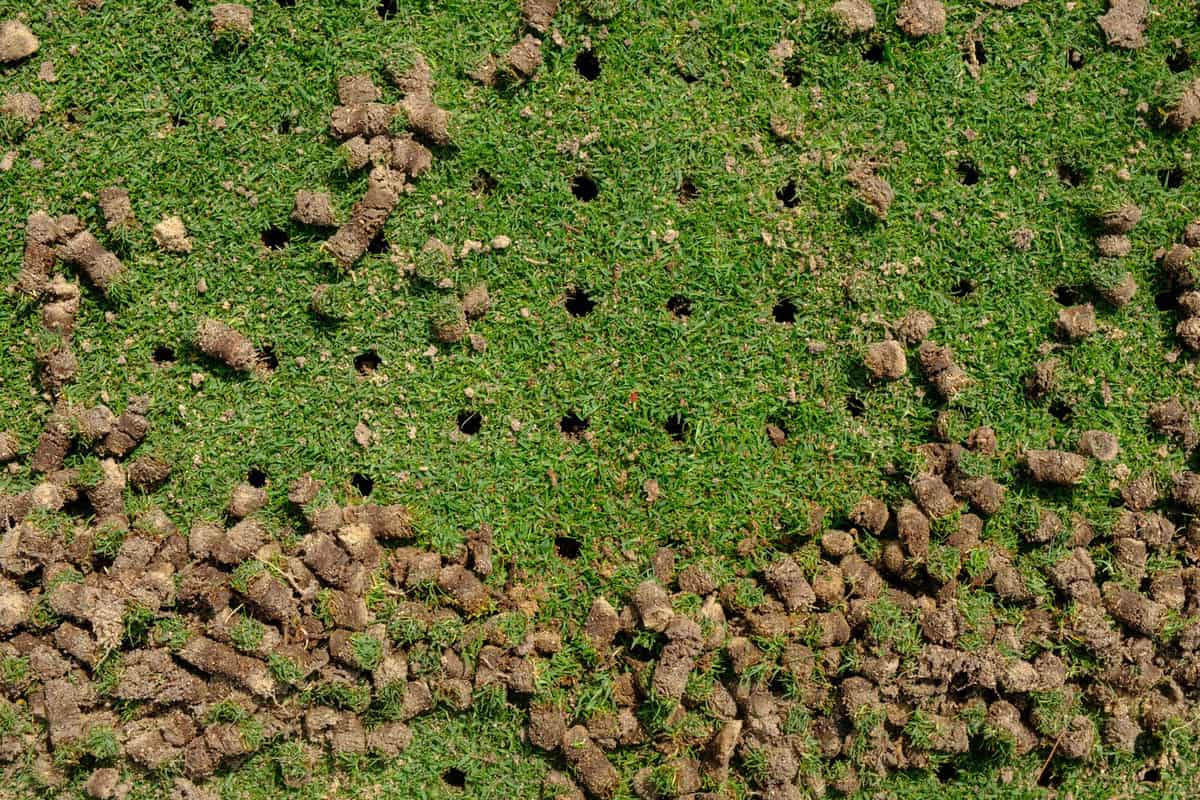
Aerating the lawn can be done just once or twice a year. Generally, the time when you should aerate the lawn depends on what kind of soil you are growing.
The best time to aerate the lawn is during its peak growing season. This allows the grass to grow and recover quickly and won't cause any lasting damage to your lawn. If you are using cool-season grass, aerate your lawn during early spring or fall. For warm-season grasses, late spring to early summer is the best time to aerate the lawn.
Signs When to Aerate the Lawn
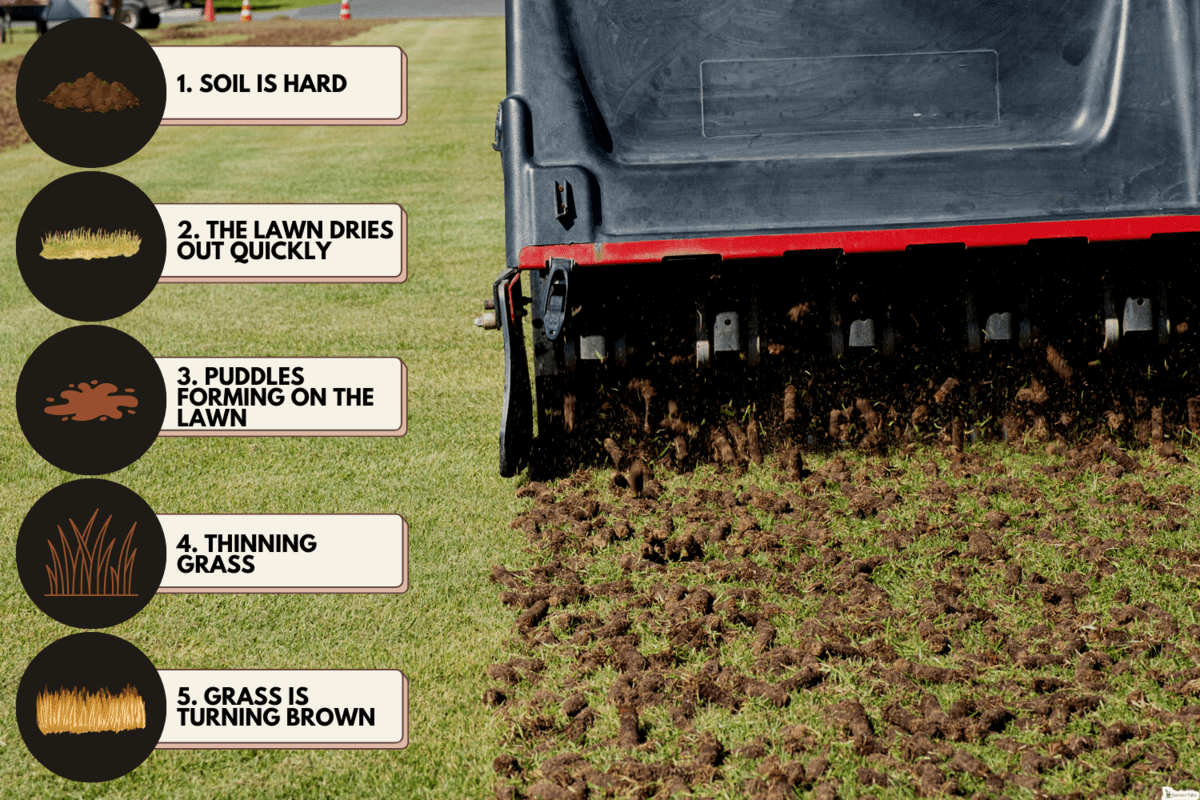
Sometimes, you will notice that the grass in your lawn isn't as lush as it used to be when you first planted it. When this happens, your lawn may need a breather, and aeration is the best way to breathe new life into it. Here are a few signs you should check out to see if your lawn needs aeration.
1. Soil is hard
One of the first few signs that your lawn needs aeration is when the soil gets compacted. You'll notice this when the soil becomes too hard, and it doesn't look like anything is penetrating it anymore. This usually happens if your lawn gets a lot of foot traffic or construction work was done to your house recently.
2. The lawn dries out quickly
Sometimes, you may notice that your lawn dries out quickly despite watering them just a few hours ago. This is usually a sign of excessive thatch on the lawn, which absorbs water instead of distributing it to the ground. If you feel like the lawn is dry or dehydrated, this may be a sign that it needs to be aerated.
3. Puddles forming on the lawn
Another thing that you should observe is the presence of puddles. If you find that your lawn forms a lot of puddles, this means that the ground has become very hard, and the water just tends to stay on top of the soil. The existence of puddles also means that the roots of your grass may be drying out, so make sure to aerate the lawn when possible.
4. Dull or thinning grass
Dull-looking or thinning grass is often a sign of poor nutrition. Air is also necessary to grass growth, so a sad-looking lawn may result from the ground needing more air. Aeration allows air to circulate better, and more air means that the roots of the grass will grow better. Observe your lawn if they are starting to look withered or dull—it just might need a breather.
5. Grass is turning brown
Typically, browning grass is a sign of disease. While this can happen to any lawn, compacted soil can increase the chances of your grass getting diseases. When you see that the lawn has patches of brown grass, it may be time to aerate it.
Is There A Difference Between Aerating And Dethatching?
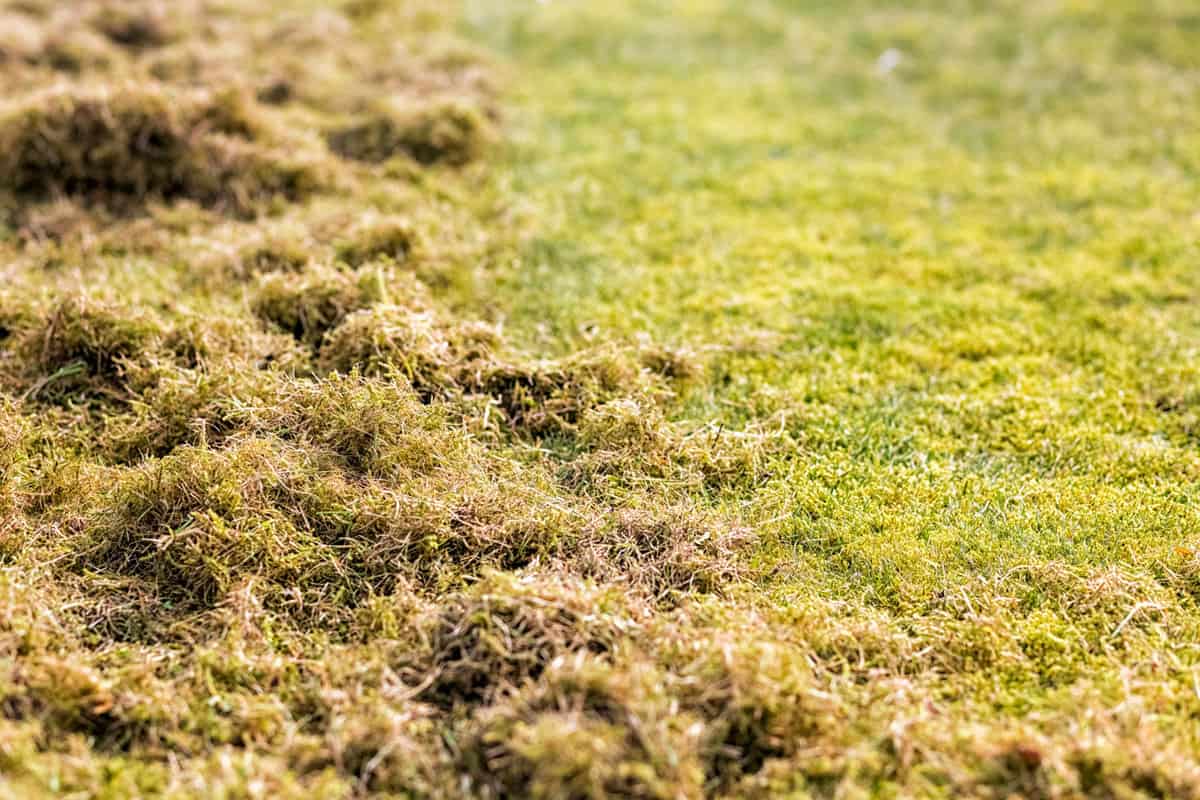
To some people, aerating the lawn and dethatching it is the same thing. Unfortunately, these two tasks are completely different, and they are both necessary for maintaining the lawn. Usually, you will want to do both aerating and dethatching at the same time to lessen the work you have to do.
As discussed earlier, aerating the lawn is a means for air to circulate to the soil and root systems of the grass. Typically, you can do this with an aerator or a manual aerating tool, and you'll only have to do this once or twice a year.
On the other hand, dethatching is the process of removing the thatch on top of the soil. Thatch consists of dead grass, leaves, and other organic matter that covers the ground and provides protection and insulation. A thin layer of thatch is great for your lawn, but if it gets too thick, it needs to be removed to avoid problems with the grass.
Final Thoughts
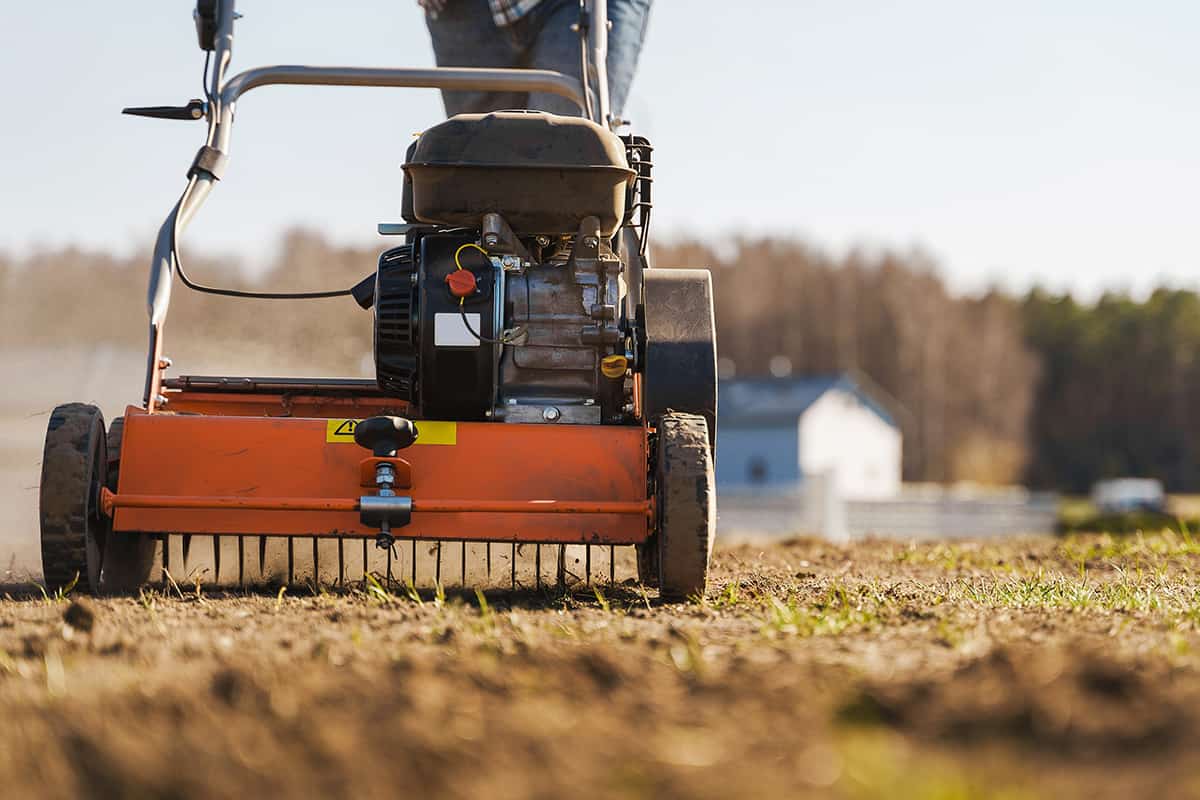
Aerating the lawn is an important job any lawn owner must do at least once a year. Getting the job done will be much easier by using an aerating machine, but it can also damage investments like sprinkler systems. If you are not sure what to do, it's always a good idea to get professional help to take care of aerating your lawn (without damaging your sprinklers.)
Are you looking to learn more about
Water Pipes Are Banging When The Sprinkler System Is On – Why And What To Do?


